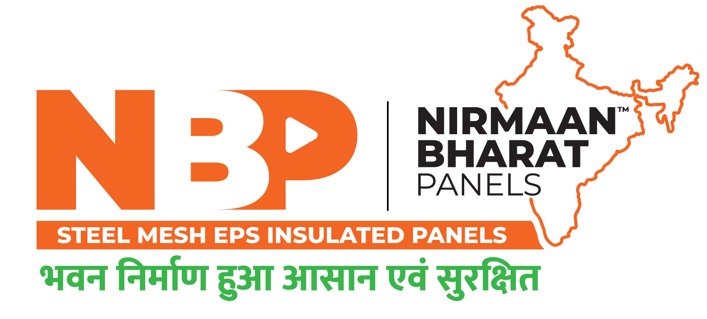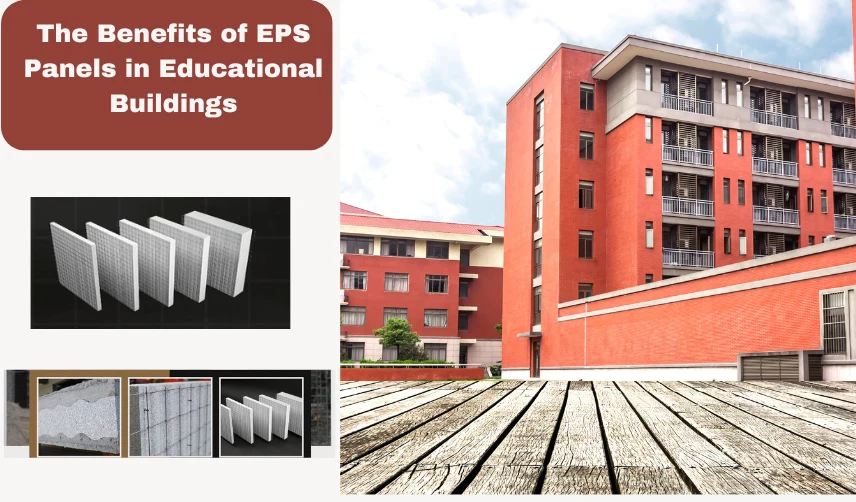In recent years, the construction industry has seen a significant shift towards more sustainable and efficient building materials. One such material that has gained popularity is Expanded Polystyrene (EPS) panels. Particularly in the context of educational buildings, EPS panels offer a myriad of benefits that make them an ideal choice. This blog post explores the various advantages of using EPS panels in educational institutions, highlighting their contribution to energy efficiency, environmental sustainability, cost-effectiveness, and overall building performance.
Table of Contents
ToggleEnergy Efficiency
One of the most significant benefits of EPS panels in educational buildings is their exceptional thermal insulation properties. EPS panels have a high R-value, meaning they are very effective at resisting heat flow. This results in excellent thermal performance, which is crucial for maintaining comfortable indoor temperatures in educational facilities. Schools often have to accommodate large numbers of students and staff, making efficient temperature regulation essential.
With EPS panels, educational buildings can significantly reduce their reliance on heating and cooling systems. This not only leads to substantial energy savings but also creates a more comfortable learning environment. Students and teachers can benefit from consistent indoor temperatures, which can enhance concentration and overall productivity.
Environmental Sustainability
Sustainability is a growing concern in modern construction, and EPS panels offer several environmental benefits. EPS is a recyclable material, and many manufacturers produce EPS panels using recycled polystyrene. This reduces the demand for new raw materials and minimizes waste.
Moreover, the production of EPS panels requires less energy compared to traditional building materials like concrete and brick. This lower energy consumption during manufacturing contributes to a reduction in the carbon footprint of construction projects. By choosing EPS panels, educational institutions can demonstrate their commitment to sustainability and reduce their impact on the environment.
Cost-Effectiveness
Cost is always a critical factor in the construction of educational buildings, which are often funded by public or limited budgets. EPS panels are an economical choice due to their affordability and the savings they provide over time. The initial cost of EPS panels is competitive with other building materials, but the real financial benefits become apparent in the long term.
The energy efficiency of EPS panels translates to lower utility bills. Schools can save significantly on heating and cooling costs, freeing up resources for other essential areas such as educational programs and infrastructure improvements. Additionally, the lightweight nature of EPS panels can reduce transportation costs and the need for extensive structural support, further lowering construction expenses.
Durability and Longevity
Educational buildings need to withstand heavy use and high traffic, making durability a key consideration. EPS panels are highly durable and resistant to various environmental factors. They do not absorb moisture, which helps prevent issues such as mold and mildew growth. This is particularly important in educational settings, where indoor air quality can significantly impact the health and well-being of students and staff.
EPS panels are also resistant to pests, which can be a common problem in traditional building materials. Their robust nature ensures that educational buildings constructed with EPS panels have a longer lifespan and require less maintenance over time. This durability contributes to the overall cost-effectiveness of using EPS panels, as schools can avoid frequent repairs and replacements.
Fast and Efficient Construction

The speed of construction is another notable advantage of EPS panels. These panels are prefabricated, meaning they are manufactured off-site and then assembled on-site. This prefabrication process significantly reduces construction time, allowing educational buildings to be completed more quickly than with traditional building methods.
For schools and other educational institutions, faster construction means less disruption to academic schedules and quicker access to new or renovated facilities. This efficiency is particularly beneficial for projects with tight deadlines or those that need to be completed during school breaks.
Design Flexibility
EPS panels offer a high degree of design flexibility, which is crucial for educational buildings that often require specific architectural features and layouts. The panels can be easily cut and shaped to fit unique designs, allowing architects to create functional and aesthetically pleasing spaces that meet the needs of students and staff.
Furthermore, EPS panels can be used in various parts of a building, including walls, roofs, and floors. This versatility makes them suitable for a wide range of applications, from classrooms and laboratories to gymnasiums and administrative offices. The ability to customize EPS panels to fit different design requirements ensures that educational buildings can be tailored to support diverse educational activities and programs.
Acoustic Insulation
In addition to thermal insulation, EPS panels also provide excellent acoustic insulation. Noise control is a critical factor in educational environments, where excessive noise can disrupt learning and teaching activities. EPS panels help to reduce sound transmission between rooms and from external sources, creating a quieter and more conducive learning environment.
Improved acoustic performance enhances the overall quality of educational spaces, allowing students to focus better and teachers to conduct lessons more effectively. This benefit is particularly valuable in schools with open-plan layouts or in urban areas where external noise can be a challenge.
Also, read
How Long Does EPS Panel Construction Typically Take?
Conclusion
The adoption of EPS panels in educational buildings offers numerous benefits that address the unique needs of these environments. From energy efficiency and environmental sustainability to cost-effectiveness and durability, EPS panels provide a comprehensive solution for modern educational facilities. Their fast construction times, design flexibility, and acoustic insulation further enhance their appeal, making them a smart choice for schools and universities looking to build or renovate their campuses.
By embracing EPS panels, educational institutions can create healthier, more comfortable, and sustainable learning environments that support the success and well-being of students and staff. As the demand for greener and more efficient building materials continues to grow, EPS panels are poised to play a pivotal role in the future of educational construction.


